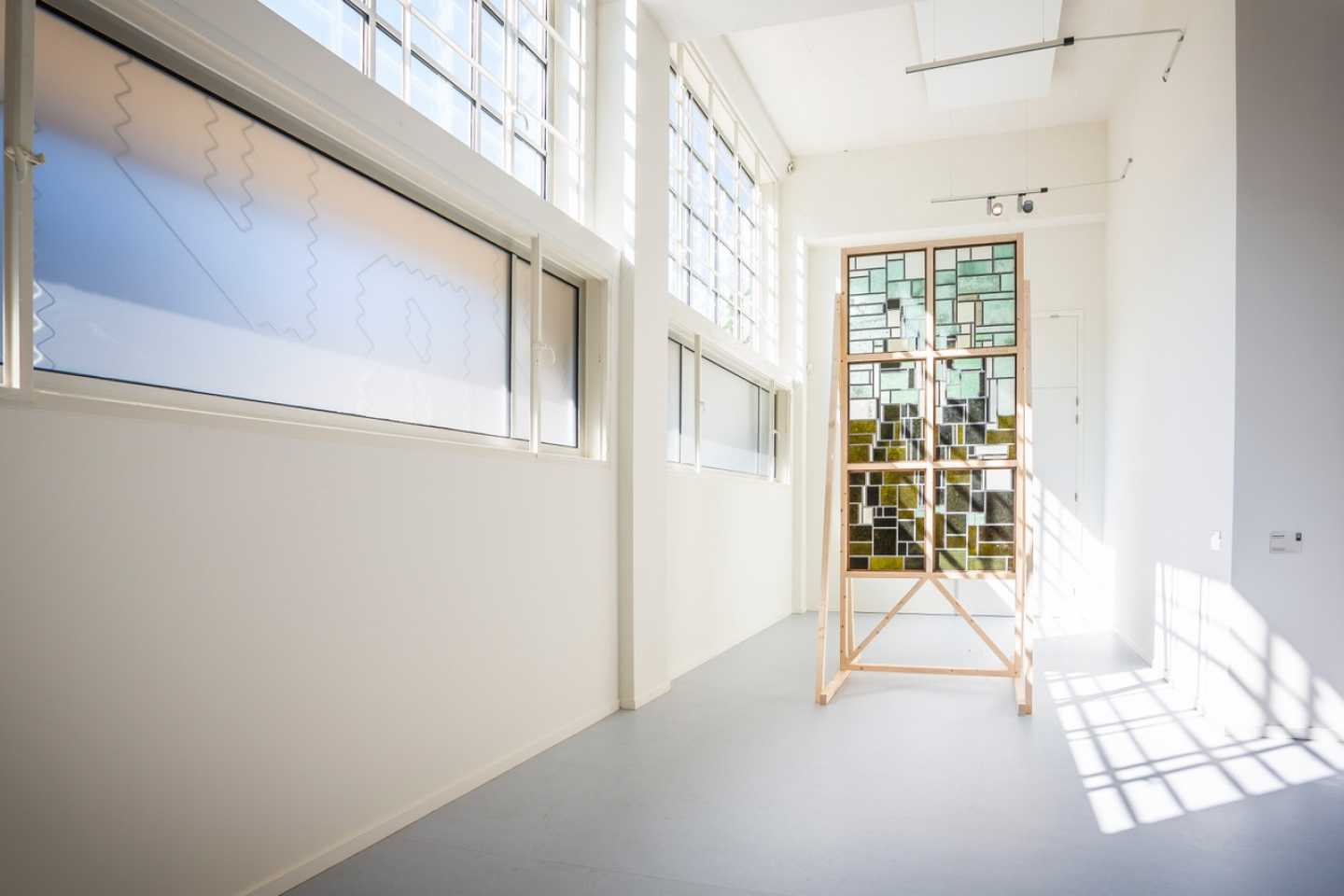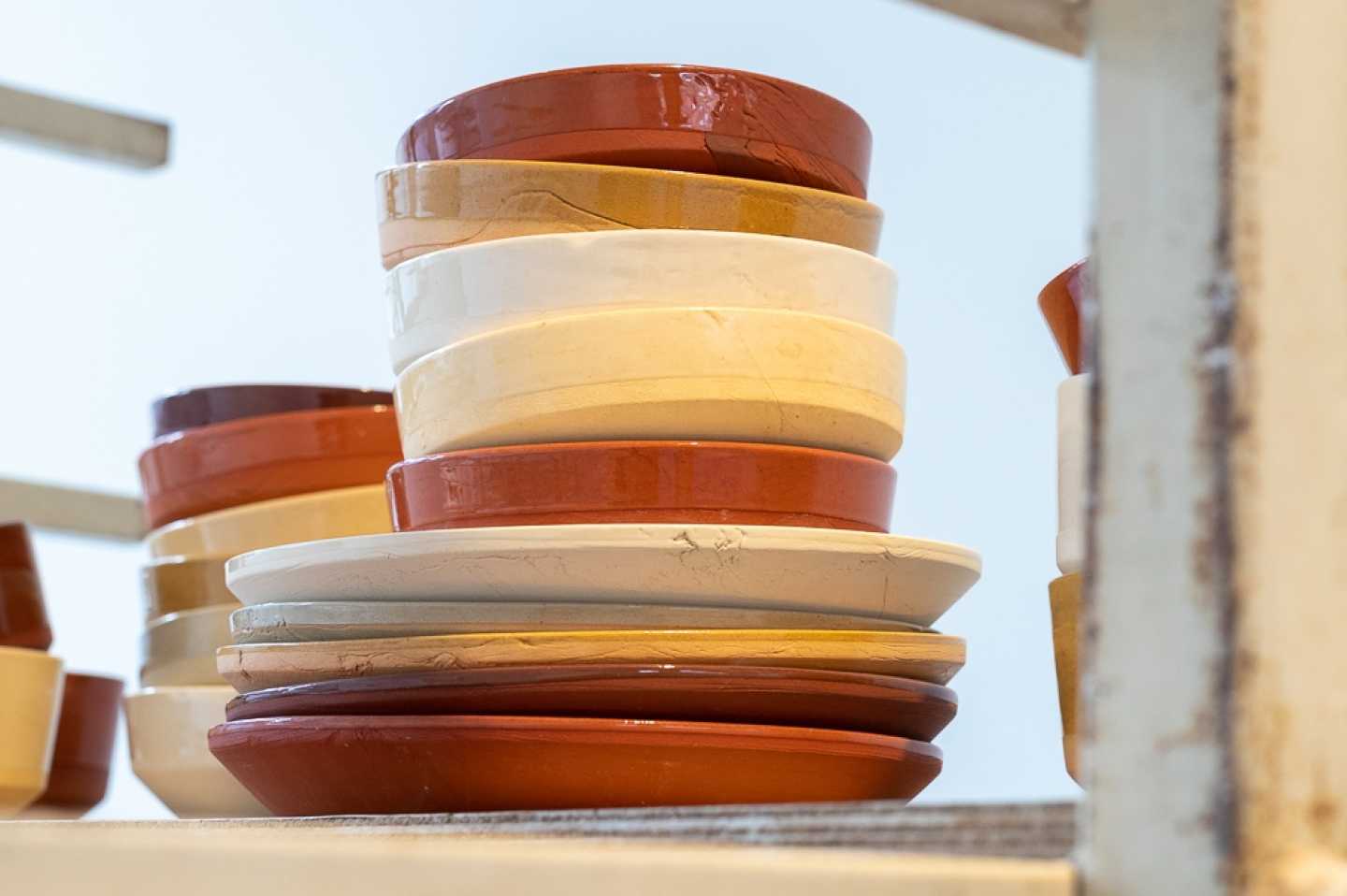
Earth Alchemy — 15 Years of Digging
— A Retrospective Exhibition
How do we recognize what is truly valuable in a society full of luxury and abundance? What knowledge can we gain from our surroundings and how do we learn to better use and appreciate materials from our everyday lives? Earth Alchemy – 15 Years of Digging presented Atelier NL’s first-ever retrospective exhibition at the Museum van Bommel van Dam. For over a decade, Nadine Sterk and Lonny van Ryswyck have been engaging with local communities, showcasing the narratives of the earth and all that it produces. By thoroughly analyzing clay, sand and wood, and processing them into, for example, ceramics or glass vessels, Atelier NL aims to restore the vital connection between people and the world we live in.
Drawn From Clay — Noordostpolder
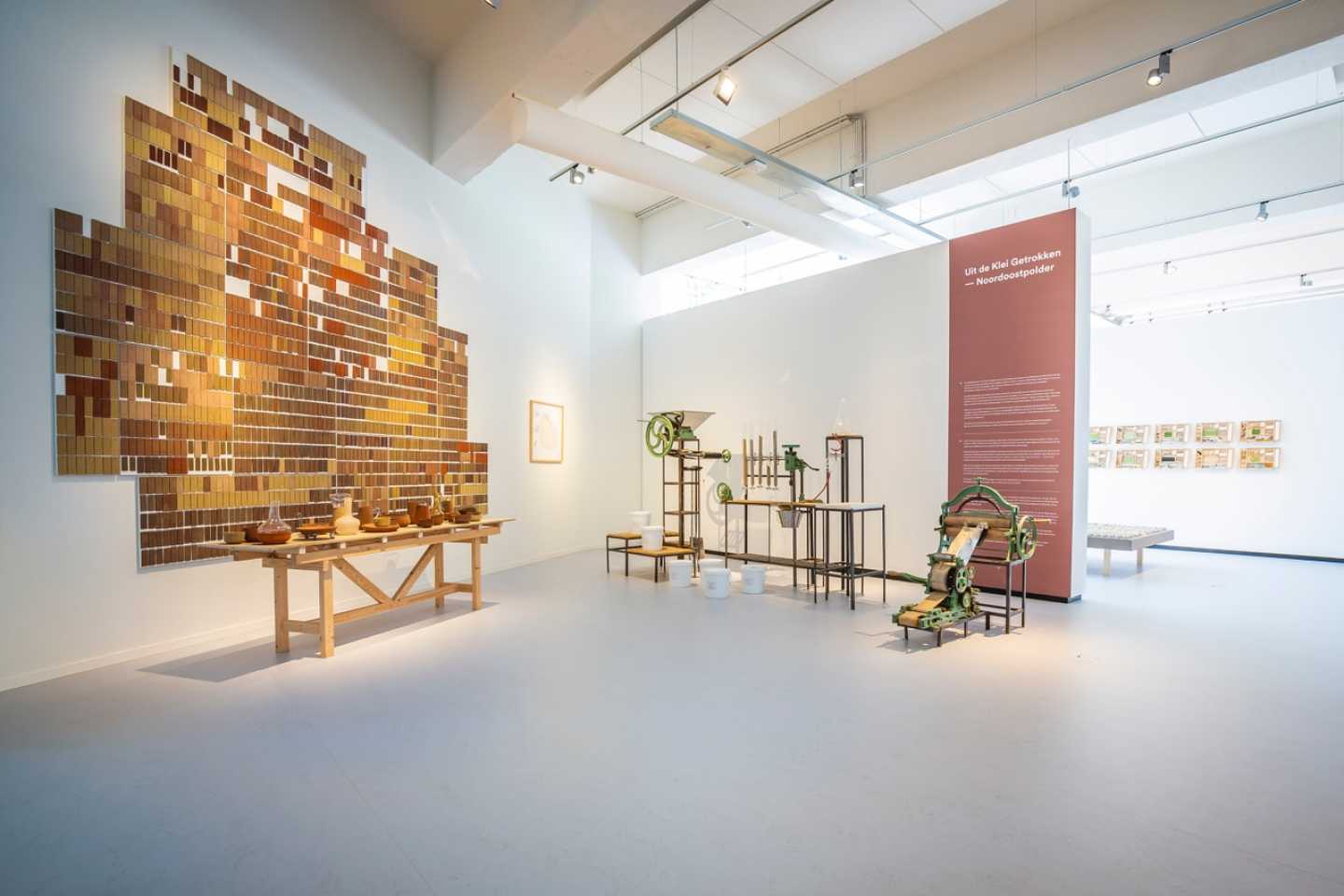
Atelier NL began their journey by exploring a wide variety of local clays formed over centuries by glaciers, oceans, rivers and wind. In 2007, Nadine & Lonny travelled to the Noordoostpolder, where they began digging and processing earth into usable clay, establishing what has become their foundational working methodology. During this time, they immersed themselves in the lives and stories of over 80 farmers who worked the soil, capturing their portraits and collecting buckets of earth from each plot to process into ceramic tiles. As a collection, these tiles grew into an earth map of the entire region that showcases the variations in ceramic colour, size, and texture — a result of the material characteristics that comprise the specific terrain of the Noordoostpolder. Atelier NL also used the clay material to produce a small collection of tableware that represents each farm. To show their appreciation to all the farmers they had visited during their stay, the designers organized a festive meal where the food from the land was served on this tableware; a poetic gesture in which the vegetables consumed at lunch could be served on the same earth that grew them. The project ‘Drawn from Clay’ encourages us to look at the landscape from a molecular perspective and consider the connections between place, identity, history and the origin of raw materials.
Sand Journey
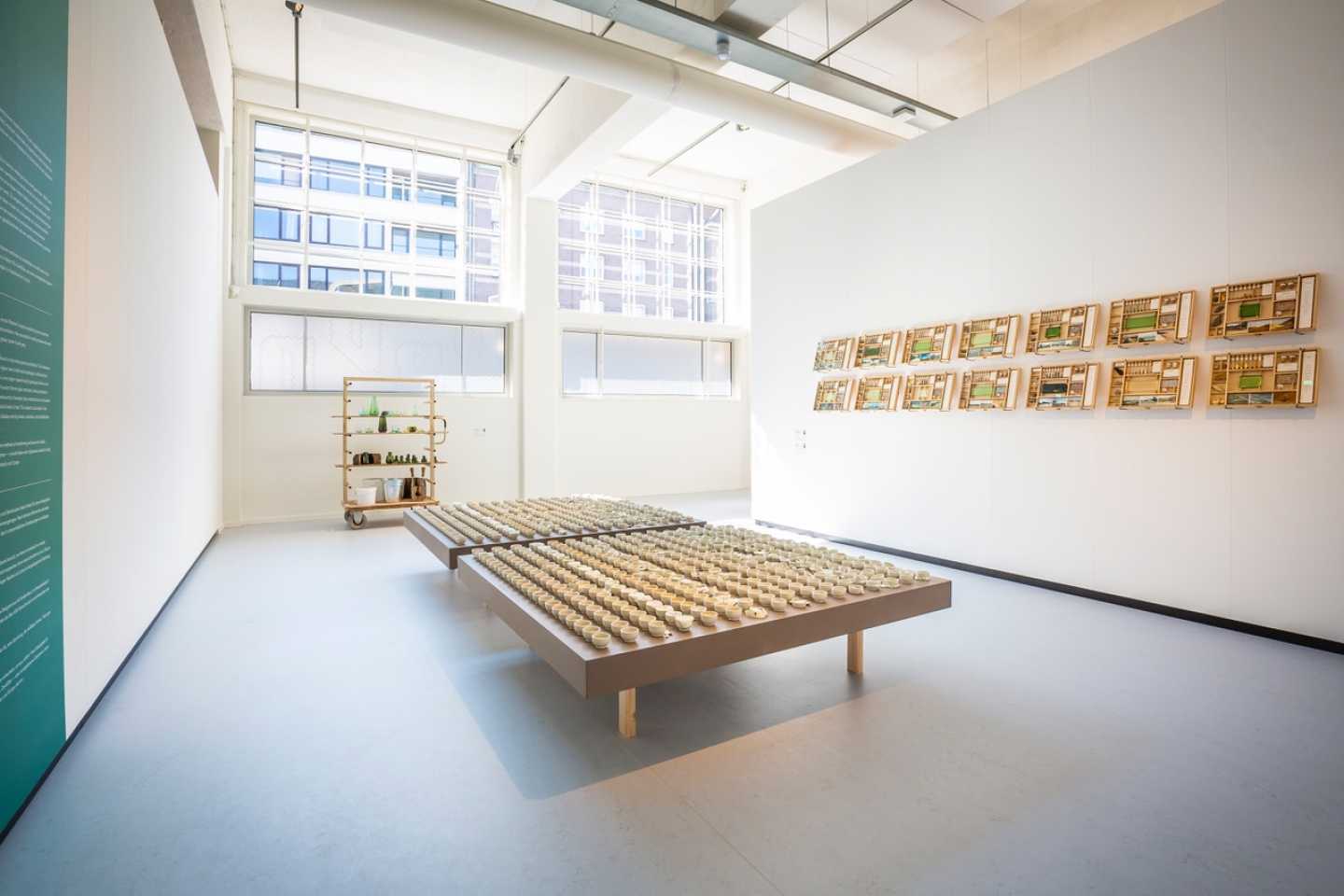
Atelier NL has created an extensive library of varying sands from across Western Europe by exploring dunes, beaches, rivers, mountains, and quarries. After intensive research and experimentation, they succeeded in melting these wild sands into stunning glass that ranges from silvery-black to sea-blue, or grassy-green to ash-grey. Currently, the glass industry exclusively uses “pure” white sands found in only a few quarries worldwide. This is because “wild” sands are deemed impure and inefficient as they require a higher level of skill and knowledge to effectively be transformed into glass. To challenge these conventions, Nadine & Lonny began researching the geological history and chemical composition of sand. The designers followed the path of ancient Roman glass merchants, taking samples of eighty types of sand, mapping, and classifying them. With this diverse array of samples, they conducted over a thousand glass tests and experimented with how the material reacts to different levels of heat. This research culminated in the creation of Atelier NL’s first material archive — a glass library that displays varying colours, opacities, and crystallization patterns. Through this process, they were able to refine increasingly effective methods of transforming wild sand into viable, everyday glass objects. This resulted in the Atelier NL ZandGlas series — a mouth-blown set of glassware made by fusing locally sourced sand collected from different regions in the Netherlands and Europe.
Fe2o3
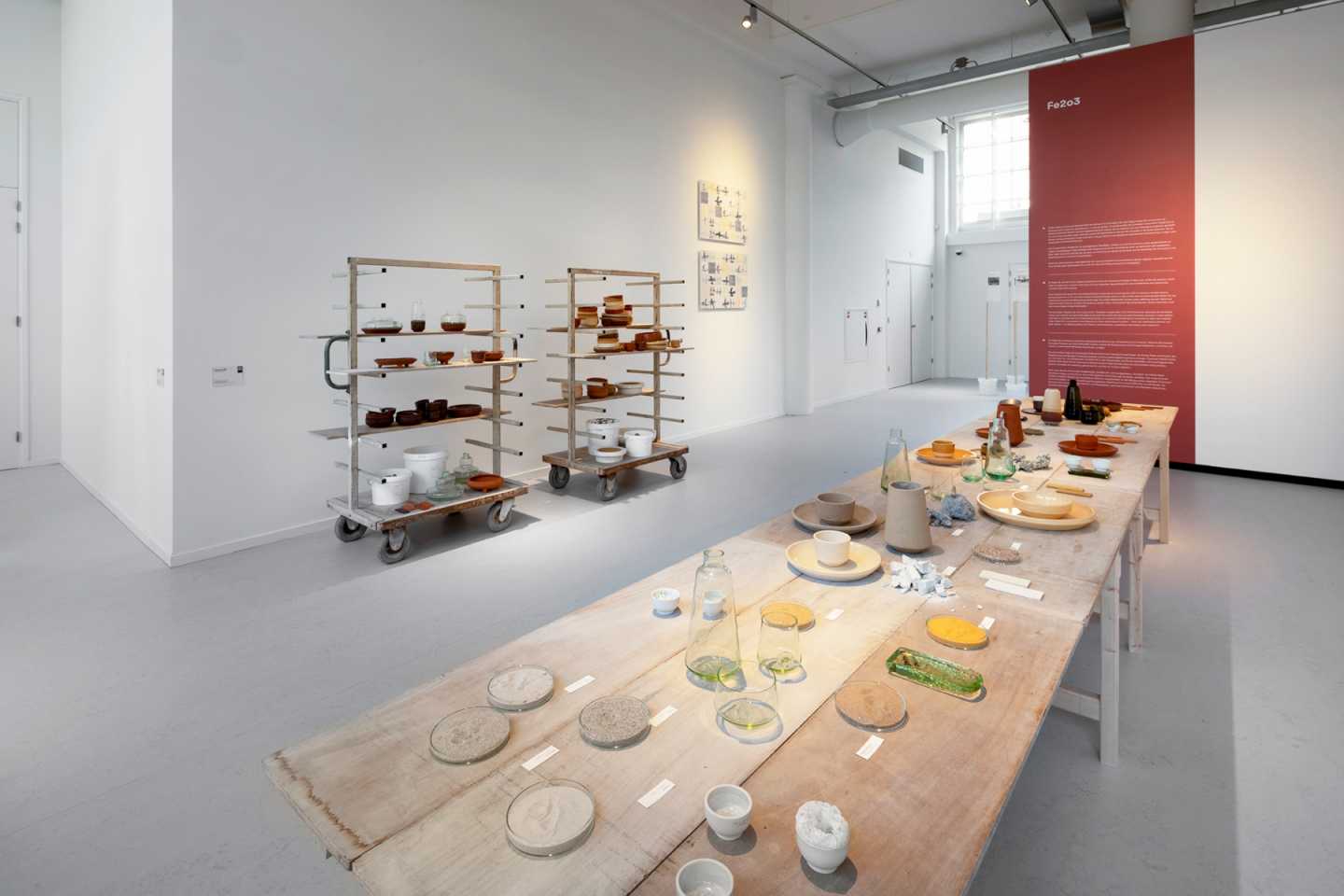
At Atelier NL, the earth is an integral component to both the meaning and design of their work. Unlike the industry, which seeks homogeneous products made from pure raw materials, they embrace the very imperfections and colours that minerals in the earth produce. Much research has gone into uncovering what each soil produces and brings the craft of making to another level by placing importance on the concept of place visualized through colour. In many of the clay and sand samples Atelier NL has collected from across the Netherlands and Europe, iron oxide (Fe2o3) often proves to be a defining element. More iron means that both ceramic and glass will produce a darker colour once fired at high temperatures; ceramic becomes a rich burnt red and glass a deep forest green. The handmade ‘ClayService’ and mouth-blown ‘ZandGlas’, created after much trial and error, showcase the terrestrial colours and material structures that speak to the land from which the clay and sand have been sourced. In every edition, each piece is stamped with its corresponding location as a means of maintaining the connection to place and material origin. Atelier NL now presents a reconfiguration of their entire material archive — from raw materials to ceramic and glass objects — by displaying them from least to most ferriferous, unearthing a fascinating colour spectrum.
To See a World in a Grain of Sand

“Have you ever looked closely at a grain of sand? Imagined it as a small part of the world, with its very own story to tell?” The journey of a grain of sand has been guided by water, wind, and ice over time. Just like people, each grain has its own character and tells a unique story of the land and history. It is also one of the most important materials in our lives. Without it, we would have no glass, no computer chips, and no buildings. Every year, we remove billions of tons of sand from beaches, rivers, oceans, and quarries, locking it away in infrastructure and technology. This makes sand one of the most quickly disappearing natural resources in the world, so much that there is now a global sand scarcity. ‘To See a World in a Grain of Sand’ is a project that maps the earth through small sand samples contributed by people all across the world, revealing hidden narratives embedded in glass fused from ‘wild’ sands. From a hot and dry desert to a cold and snowy mountain; a skyscraper in a bustling city to an archaeological ruin; an invisible political border to a vast and open landscape; an excavated gold mine to the bottom of an ancient seabed; or a place of civil unrest to a serene holiday island. When these geographical diversities become visible, it becomes clear that sand carries not only ecological significance but powerful social and political histories.

Vase Monte Azul
— Learn more about this project here
Monte Azul is a favela on the outskirts of Sao Paolo, Brazil. It is where the vases were conceived and designed, and where they are manufactured, in an effort to boost salability for the local woodworkers. In Monte Azul, certain waste provides people with reusable and resalable material. Empty, colourful, plastic detergent bottles, retrieved from waste by local collectors, were the inspiration for this project and used as the waterproof core of wooden vases manufactured by local woodworkers.

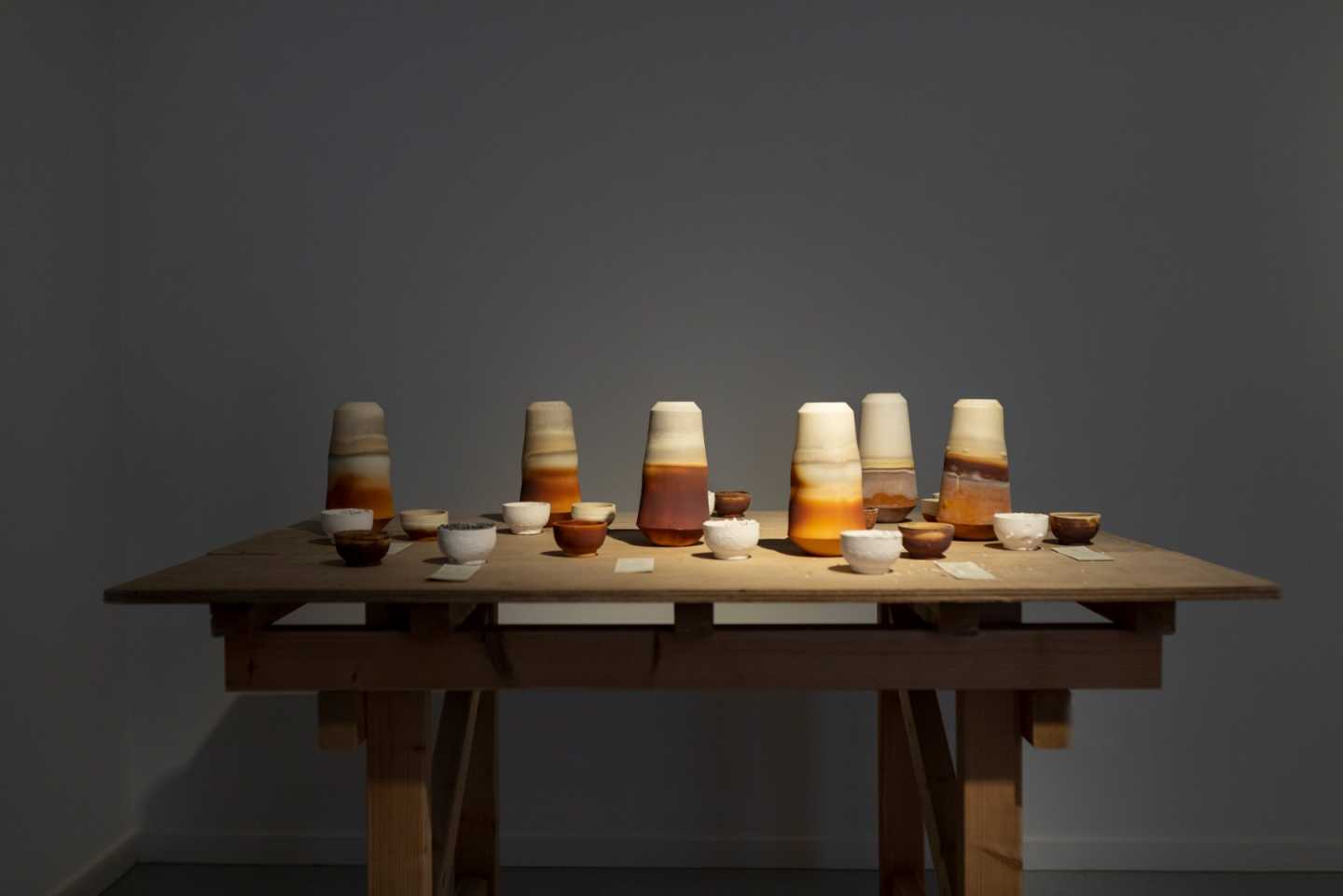

ZoutVaas
— Learn more about this project here
ZoutVaas is made of salty clay. By adding various natural salts during the firing process, the iron elements from the salty brown in the clay oxidize. Under the influence of moisture and climate, the vases will perspire and crackle, causing them to decay slowly.

Kitting Lamp
— Learn more about this project here
Like a living organism, the Knitting Lamp contains all of the essential “mechanisms” that it needs to grow. When energy is provided, it starts knitting its own lampshade. The shade grows slowly around the lamp, pausing whenever the light is off. Its growth places it beyond the utilitarian role of the typical lamp. The Knitting Lamp is an animate part of the space it inhabits, with a life and material history of its own.



Timewriter
— Learn more about this project here
The Timewriter is a mechanical instrument made to measure and register time. Using four numerical stamps it imprints time, tracing it, on paper every minute. Time is described and recorded as a continuous linear progression. The future becomes present, the present becomes past, the past becomes future. In a new take on time, the Timewriter creates a physical recording, revealing the accumulation of time.







